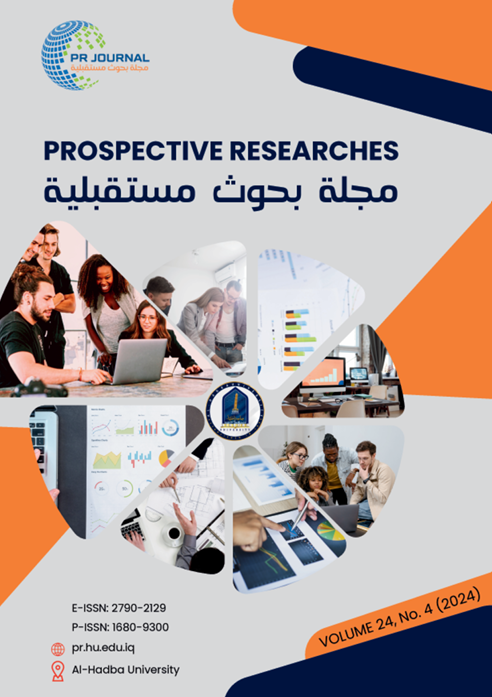A Secure Hierarchical Agglomerative Clustering for Social Media Image Classification
DOI:
https://doi.org/10.61704/jpr.v24i4.pp1-8Keywords:
Social Media Analytics, Principal Component Analysis (PCA), Hierarchical Clustering, Dimensionality Reduction T-distributed Stochastic Neighbor Embedding (t-SNE)Abstract
Hierarchical clustering of social media data is frequent. Data points indicate clusters, and it combines the neighbouring clusters until one remains. Segment photos, analyze social networks, and cluster texts using hierarchical clustering. Hierarchical clustering can group related social media data pieces. Topic-grouping social media communications helps identify patterns. Segmenting images by colour, texture, and form may aid object recognition, face detection, and content-based image retrieval. Social connection hierarchical clustering organises persons or communities in social network analysis. This identifies influential persons and groups and explains social networks. Communities, co-authorship networks, and important actors can be identified on social media. This article analyses social media images ' visual and linguistic information using hierarchical agglomerative clustering. For social media content images from a data set named The experimental results were applied to a dataset named YasminNadiaArabcSocialMediaImages in Kaggle which contains images of famous Arabic social media celebrities, the clustering approach groups comparable pictures using TF-IDF vectorization for textual attributes and PCA and t-SNE for visuals.
References
Ali, R., Waisi, N., Saeed, Y., Noori, M., and Rachmawanto, E. (2024). Intelligent Classification of JPEG files by Support Vector Machines with Content-based Feature Extraction, Journal of Intelligent Systems & Internet of Things, 11(1), pp. 1-11.
Alshwely, M., and Alsaad, S. (2020). Image Splicing Detection based on Noise Level Approach, Al-Mustansiriyah J. Sci, 31(4), pp.55-61.
Charan, J., Keerthivasan, P., Sakthiguhan, D., Lanitha, B., and Sundareswari, K. (2022). An Effective Optimized Clustering Algorithm for Social Media, International Conference on Edge Computing and Applications (ICECAA), pp. 400-405.
He, M. (2021). Image Content Effectiveness Analysis of Social Media Posts Using Machine Learning Methods, Ph.D. Dissertation, University of Delaware.
Ma, R., and Furuya, K. (2024). Social Media Image and Computer Vision Method Application in Landscape Studies: A Systematic Literature Review, Land, 13(2), pp. 1-22.
Maravarman, M., Babu, S., and Pitchai, R. (2023). An Extended Agglomerative Hierarchical Clustering Techniques, International Conference on Advances in Computing, Communication and Applied Informatics (ACCAI), pp. 1-8.
Meng, L., Tan, A., Wunsch II, D., Meng, L., Tan, A., and Wunsch II, D. (2019). Clustering and Its Extensions in the Social Media Domain, Adaptive Resonance Theory in Social Media Data Clustering: Roles, Methodologies, and Applications, pp. 15-44.
Mohammad, E. (2019). Image Processing of SEM Image Nano Silver Using K-means MATLAB Technique, Al-Mustansiriyah Journal of Science, 29(3), pp. 150-157.
Renjith, S., Sreekumar, A., and Jathavedan, M. (2022). Taxonomy Grooming Algorithm: An Autodidactic Domain Specific Dimensionality Reduction Approach for Fast Clustering of Social Media Text Data, Concurrency and Computation: Practice and Experience, 34(11), pp. 1-18.
Rytsarev, I., Kupriyanov, A., Kirsh, D., and Liseckiy, K. (2018). Clustering of Social Media Content with the Use of Big Data Technology, Journal of Physics: Conference Series, 1096(1), pp. 1-7.
Salman, Z. A. W. (2023). Text Summarizing and Clustering Using Data Mining Technique, Al-Mustansiriyah Journal of Science, 34(1), pp.58-64.
Zhang, H., and Peng, Y. (2024). Image Clustering: An Unsupervised Approach to Categorize Visual Data in Social Science Research, Sociological Methods and Research, 53(3), pp. 1534-1587.
Downloads
Published
How to Cite
Issue
Section
License
Copyright (c) 2025 Journal of Prospective Researches

This work is licensed under a Creative Commons Attribution-NonCommercial-NoDerivatives 4.0 International License.
Copyright © 2025 by the authors. This work is licensed under a Creative Commons Attribution-NonCommercial-NoDerivatives 4.0 International License (CC BY-NC-ND 4.0). You may not alter or transform this work in any way without permission from the authors. Non-commercial use, distribution, and copying are permitted, provided that appropriate credit is given to the authors and Al-Hadba University.







